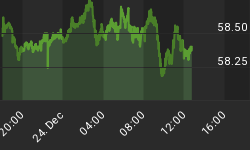First rule in writing about investment strategy is to only write about markets where money might be made. About five years ago we realized that something different was happening in the world of Agri-Food. The era of bountiful and inexpensive food that had existed for almost 200 years, starting in the early 1800s, was coming to end. Plentiful food, in all of mankind's history, was the aberration, not the norm. The world's Agri-Food system was "reverting to the mean", where adequacy would be a perennial issue.

When coaching a basketball team one is advised to start with tall players. Tall players can be taught to play basketball, but players cannot be taught to be tall. In the above chart of our Agri-Food Price Index a rising trend of many years in length is evident. While rising prices for Agri-Foods do not guarantee that values for Agri-Investments will rise, that condition is the equivalent of starting with tall basketball players.
As is the case with all indices, not all components move together. Some will be rising while others will be falling. Today, beef is the hottest. Beef prices index of the USDA continues to move to new highs. That condition will likely persist through this time next year. Remember, beef is not made in a factory. If we started today with a pregnant cow, a calf would not be delivered for about nine months. Then, that calf must be raised to marketing weight. Time is an important ingredient in the production of Agri-Foods.
On the other end of the performance spectrum are sugar and cotton. Sugar prices have fallen nearly 40% from the 90-week high while cotton prices have tumbled almost 60%. Why did that happen? High prices encouraged producers to produce more sugar and cotton. At the same time, buyers tried to consume less. In Agri-Foods, high prices set the stage for lower prices in the following year. Reverse is also likely. Low prices create an environment conducive to rising future prices. In short, buy your cotton shirts this winter and eat lots of sweets over the holidays. Both will likely be more expensive next year.
While prices for an Agri-Food can move somewhat independently as described above, prices for one Agri-Food do influence prices for other Agri-Foods. While high corn prices in one season influence corn production in the next season so do corn prices influence the price of beef, pork, and chicken in the future. While corn prices are revenues to the grain farmer, corn prices are an expense item to someone raising cattle. Over time an equilibrium between corn prices and beef prices that satisfies the economic needs of both producers must develop.

UN Food and Agricultural Organization produces a series of price indices for the important Agri-Food groups. In the chart above is plotted the percentage change for the current value of each index versus the ten-year low for that index. The composite index, labeled ALL, is up ~150% from the low of the past ten years.
Meat prices, globally, are up ~100% from the low. As can be observed in the chart, the other indices are up in excess of 180% from the lows. Meat prices are underpriced relative to the rest of the Agri-Food universe. Meat prices need to rise by 50-100%, at least on a relative basis, to reestablish "equilibrium."
While corn farmers "owned" the past few years, producers of beef, pork, and chicken will likely "own" the next few years. Investors thinking about the hungry world of the future should be researching those firms that produce cattle, hogs, and chicken. A massive secular transfer of wealth to Agri-Producers is only in infancy, and the Agri-Demand/Agri-Supply situation is far more precarious than it ever was in oil.
AGRI-FOOD THOUGHTS is from Ned W. Schmidt,CFA,CEBS, publisher of The Agri-Food Value View, a monthly exploration of the Agri-Food grand cycle being created by China, India, and Agri-Energy. To contract Ned or to learn more, use this link: www.agrifoodvalueview.com
















